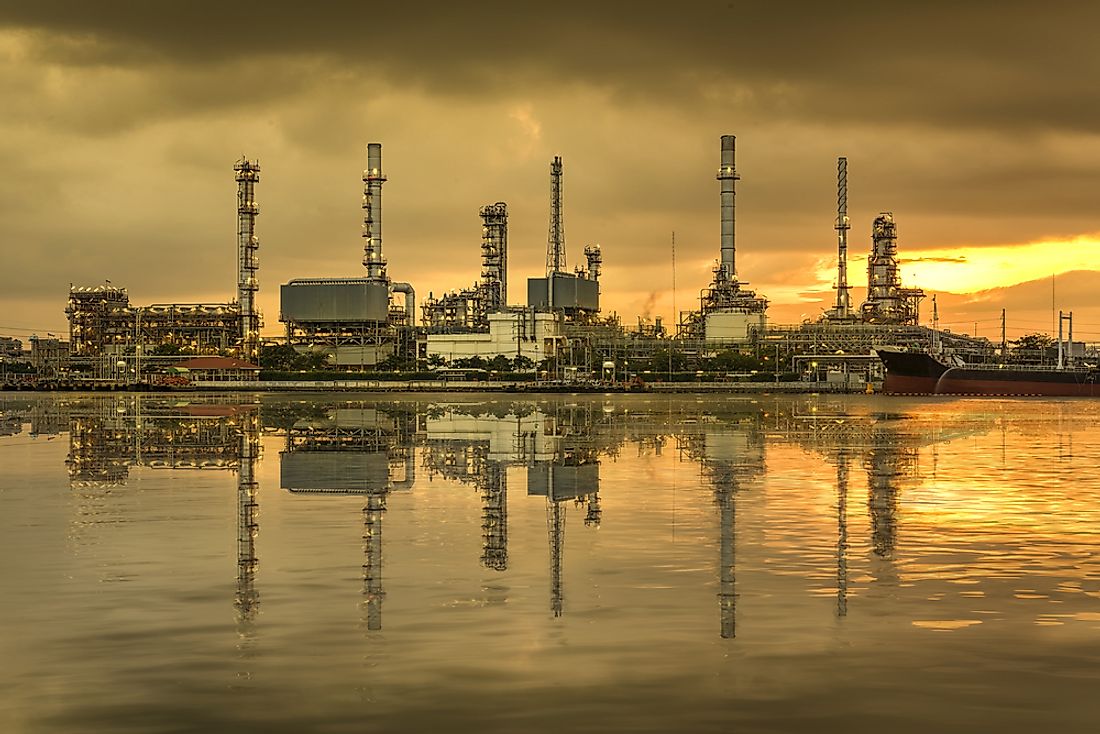What Are The Biggest Industries In Iran?

Iran is a country found in West Asia with a population of just over 81 million people. By land area, the country is the 17th largest in the world and the second largest in the Middle East. Iran shares its borders with Turkey, Iraq, Armenia, Pakistan, Afghanistan, Turkmenistan, and Azerbaijan. Iran also has a coastline along the Caspian Sea, the Gulf of Oman, as well as the Persian Gulf.
Iran has a mixed economy that is also a transition economy with the public sector playing a significant role. About 60% of the country's economy is centrally planned and involves gas and oil production. Iran is believed to host 10% of the proven reserves oil reserves in the world and about 15% of the gas reserves in the world, ranking the country as one of the world’s energy superpower. According to 2019 estimates, the country has GDP based on purchasing power parity of $1.63 trillion and nominal GDP estimate of $333.6 billion which ranks the country as the 18th highest based on GDP on purchasing power parity. Some of the leading industries in Iran include agriculture which accounts for 9.8% of the country's GDP.
Agriculture
Agriculture in Iran accounts for about 10% of the GDP and employs about 1/6 of the total labor force. Only about 9% of the total land area is arable which is suitable for agriculture, and the main food producing regions in the country are located in the Caspian area and particularly in the northwest and valleys.
In the recent past agricultural output in the country has increased because of mechanization, modernization, and improvement on livestock and crops. Some of the most important crops include wheat, which is cultivated mainly in the north-western and western regions of the country. Rice is similarly another important crop particularly in the Caspian region where it is widely cultivated. Other crops cultivated across the country include cotton, corn, barley, sugar beets, tobacco, hemp, tea, fruits, potatoes, beans, lentils, vegetables, fodder plants, almonds, and walnuts among others.
Manufacturing
Manufacturing in Iran began taking root in the 1920s and during the Iran-Iraq war most of the Industries in the country, particularly the petrochemical plants, were heavily damaged. The oil refinery in the country came to a halt when Iraq bombed the Abadan oil refinery. However, the reconstruction began in 1988 and by 1993 most productions in the Industries had resumed almost on a full scale. Despite the war that raged in the country for more than a decade several small industries sprang up in the country and produced different goods which would have otherwise been imported. Most manufacturing industries in the country engage in copper and steel products which include electric and home appliances, telecommunication equipment, industrial machinery, and cement. Other items manufactured in the country include rubber products, paper, leather products, processed food, Pharmaceuticals, and textiles.
Oil and Gas
Iran has been an oil exporting nation since 1913, and most of the country's oil wells are in the southwestern Central Region of the Western Zagros Mountains. They are also oil wells found in other parts of the country, particularly in the Persian Gulf. By 1978, the country was the world’s 4th leading oil producer, the 2nd leading in the OPEC Nations, and the 2nd leading oil exporter globally. However, following the 1979 Iranian revolution the new government cut back on oil production and in the subsequent years, there was a decline in production because of the damaged facilities during the war with Iraq. In the 1980s oil production rose again as most pipelines were repaired and annual sales increased as more wells were explored in the Persian Gulf. As of 2004 the country was producing 1.4 billion barrels of oil annually generating profits of about $50 billion. By 2015, the revenues from oil and gas in the country had reached $250 billion, and the country's oil was transported mainly by pipelines from the oil fields to the refineries and finally to different ports for export.











